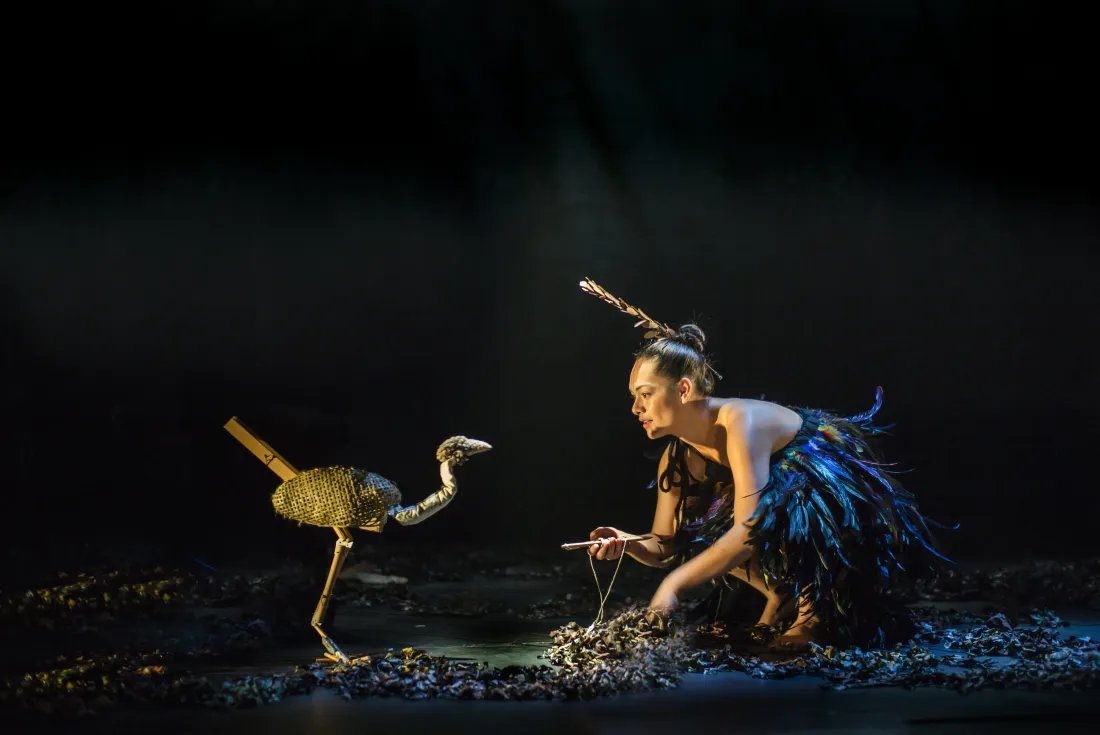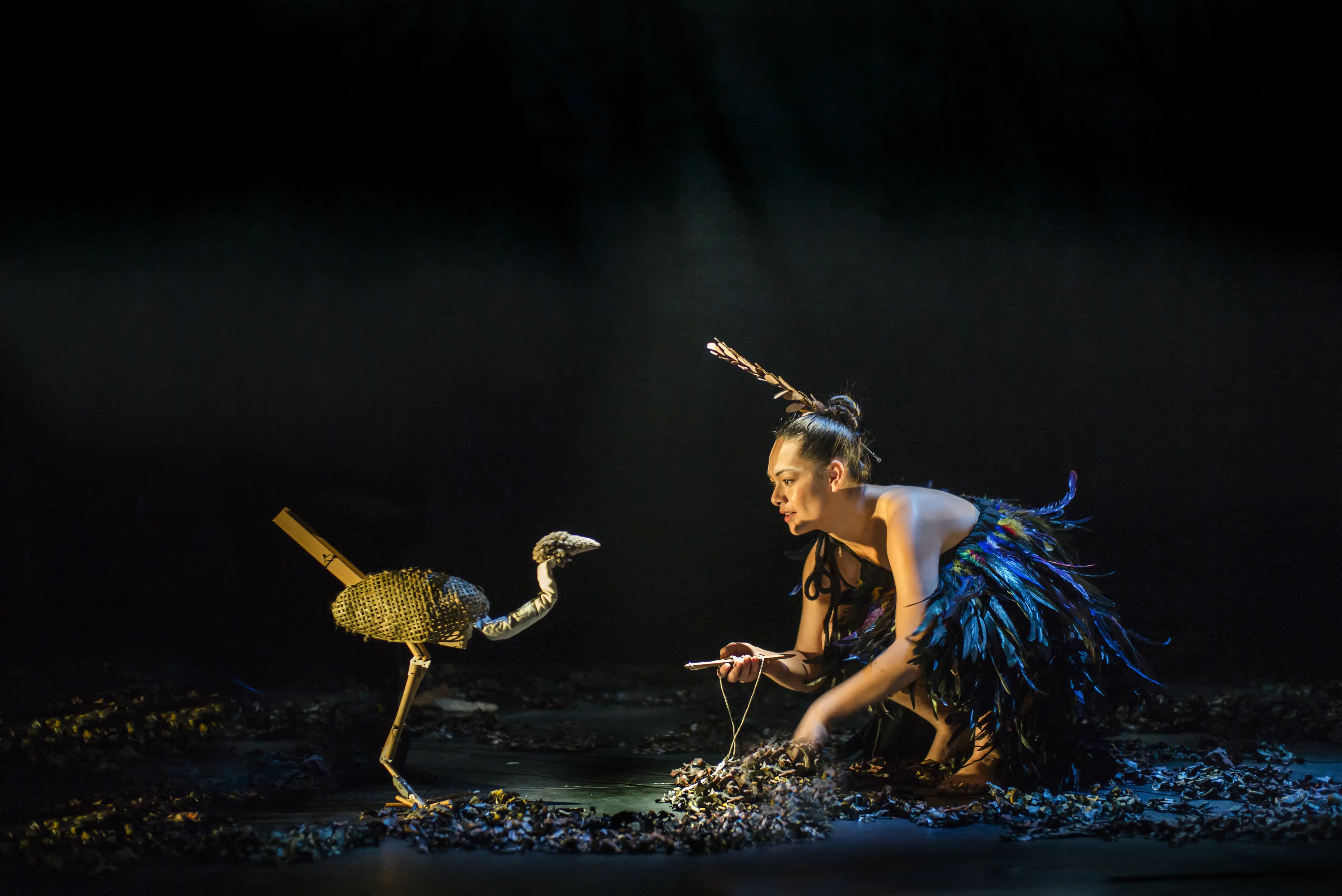Shining a light
Written by


Italian lighting designer Fabiana Piccioli landed in theatre after a spell as a translator on stage and discovering a love of live performance.
After working on Bob Wilson’s Woyzeck, she started to notice lighting more and more, and then became technical director for the Akram Khan company.
"I had no training whatsoever, apart from watching people at work on stage for three years of festivals, so going straight on tour all over the world barely knowing the difference between 220v and 110v was a bit of a suicidal experience".
Fabiana tells us more about herself and her collaboration with Nina Nawalowalo and The Conch for Marama, at Auckland Arts Festival 2016
Have you always wanted to do lighting design?
No, I studied philosophy and I wanted to be a dancer.
What was your pathway towards designing for theatre? What's your view – formal study vs experience?
I ended up working in theatre after I tried a seasonal job in the big festival we have in Rome, Romaeuropa Festival, I worked as a translator on stage and I realised I loved live performance a lot more than cinema (which I knew because of my father, being a film producer). In particular it was after working on Bob Wilson’s Woyzeck, when I started noticing lighting more and more. When I joined the Akram Khan company as technical director, I had no training whatsoever, apart from watching people at work on stage for three years of festivals, so going straight on tour all over the world barely knowing the difference between 220v and 110v was a bit of a suicidal experience, but also a fast track course.
I think studying for this must be great, with the new technologies and the possibilities a professional formation can give. My personal point of view is that following an artist, a great LD, observing every detail of how a creation evolves during the tech week, etc. this has helped me a lot.
How does a lighting designer get work in this day and age – what are your tips and tricks?
Personally I get a lot of work because I get along well with people, and also maybe because I try to support the work with lighting rather than working on my own to achieve great visual results. I am very much part of the project/part of the team kind of person.
Tell us about your work with Akram Khan Company.
It was amazing for the first seven years, touring around the world with beautiful shows and a nice group of people. I have learned most of what I know today after such a long collaboration. But once the success comes and the years pass, it’s healthy to move on and embrace different challenges.
How did you become involved in Marama and working with The Conch?
Wendy Martin was the link between myself and Nina, she suggested we work together, so Nina and I spoke on Skype a few times, I learned about the project and we decided to work together.
Tell us a bit about Marama and in what way you have connected with the story.
When I read the presentation of the idea I was thrilled. It was the first time that I had a chance to work on something which had such a huge political tone. And the fact that it wasn’t going to be delivered through text, but with images, made it very interesting and fascinating from the very start. I value the themes Marama deals with, and it has been a unique working experience, being able to connect with performers who are actually in touch with the world we’re about to lose.
How do you approach lighting design for a new show – at what stage of the process do you like to be involved, and what do you like to see or know first?
I have a few key questions to ask to the people working on a project with me, these come at the very beginning to help me understand how the ideas will translate visually. Where are we? When is this happening? Is it narrative or abstract? and so on. A mix of practical and theoretical approach, to help trigger the so called inspiration, and to establish a common vocabulary with the collaborators.
How much do you draw on your own life experiences when working?
Not from my personal life, apart from the fact that I care a lot about the work and the people involved, and this is personal. But mainly I carry with me the taste for a certain aesthetic which tends to leave the meaning/the message undetermined and open, probably this comes from my dance background, where the images and the situations are preferred to an articulated text.
What do you consider when designing for a show you know will tour?
I always try to be as plain as possible, but I constantly end up rigging lights where they are not supposed to hang, using old technology which consume a lot of watts. I have good intentions but I wouldn’t praise myself for my efficiency.
Were there any other challenges with the lighting design for this show?
Trying not to over-produce it. The aesthetical beauty of it could be not beneficial to the core strength of what’s being narrated. I had “simplicity” and “epic” in my mind during the creation. For sure not a very easy mix of ideas.
What are you working on next?
Too many things, but the most pompous thing will be Le Nozze di Figaro in Teatro alla Scala di Milano, my Dad has already brought his tuxedo to the dry cleaners, it’s at the end of October.
What’s your big idea for 2016?
Moving back to Rome, trying to rebalance the family life and the work life, London drives me into a working machine.
An Italian Story
My father, Gianfranco Piccioli, is a well known italian cinema producer, who started in the same network of Pier Paolo Pasolini (he was brought up in Ostia, and was good friend with the Citti brothers). He produced all movies by Francesco Nuti, who has been one of the main movie stars of the 80's and 90's in Italy.
I was born in Rome in 1976 and lived close to the sea till I was six. My family moved to the centre of Rome, the area around the Fountain of Trevi, when I was seven years old. I lived in that neighbourhood throughout my high school and part of my university years. I studied literature, Latin and Greek, history and philosophy at the old Liceo E.Q.Visconti and then graduated in Philosophy at University La Sapienza with a dissertation about Michel Foucault. The study was very well received, and the examining commission agreed on the highest marks (110 cum laude) and encouraged further work to get it published.
I spent my third academic year (1997-98) in Paris, as Erasmus bursary. Later on, in year 2000 I spent nine months in London and then one year in Brussels, working as a dancer. I moved back to Rome in 2002, and for the following 3 years I lived in the lively area called Pigneto. During that period I was Production Manager for the Romaeuropa Festival, where I learned the basis of my theatre and communication skills.
While finishing my last year of university I had performed in a small theatre group inspired by the work of Societas Raffaello Sanzio. Today, after almost 15 years from my last appearance on stage, I am collaborating with Raffaello Sanzio as lighting designer for Romeo Castellucci, whom I have admired and followed since I was a student.
Hopefully my lighting designer career, keeping me in a constant learning experience in contact with different cultures and challenging minds, will bring me close to more Italian artists' active in Italy and abroad. I have lived in London since 2005.
Winner of the 2013 Knight of Illumination Award for Dance for iTMOI (Sadler’s Wells).
Previous productions as lighting designer include: Go Down, Moses choreographed by Romeo Castellucci (Theatre de la Ville, Paris), We/Part (Rome Ballet), Breathe (Errol White Company), Romeo and Juliet (Rose Theatre, Kingston), Inked (Askash Odedra), Pests (Clean Break), Dust (ENB, Akram Khan Company), iTMOI (Akram Khan Company), Within, Immersed, Timeless and Now Is (Aditi Mangaldas Dance Company), Race Race, choreographed by Paolo Mangiola, (Teatro Vascello Rome), Pirates (Improbable productions) Confluence, Beatiful and Beautiful Me and Svapnagata Festival (Sadler’s Wells).
As Lighting and Set Designer: Gnosis (Akram Khan Company), Bahok (Akram Khan Company & National Ballet of China), Variations for Vibes Pianos and Strings (Akram Khan Company and the London Sinfonietta Orchestra).
Encounter the sacred beauty of the forests of Fiji, the Solomon’s, Samoa and Aotearoa at Marama, a richly textured and potent new theatre work from internationally acclaimed company, The Conch (Vula, The White Guitar), making its world premiere at Auckland Arts Festival 2016.
Marama is a powerful call from women of the Pacific – the voices of a vanishing world. The devastating effects of deforestation on their homelands and culture are brought startlingly to life through waiata, chants, dances and rituals gracefully and magically performed. As their story unfolds and as the women emerge from and disappear into their ever-changing environment, we are reminded of the ancient connection between a woman’s body and the earth and the strength and fragility of the ground upon which we all dwell.
Directed by the much-admired Nina Nawalowalo, with compositions based on field recordings, traditional songs and new works by renowned New Zealand composer Gareth Farr, indescribably beautiful design by Fabiana Piccioli (lighting designer for iTMOi) and Nicole Cosgrove, Marama will leave you breathless.
Founded in 2002, The Conch has gained an international reputation for stunning visual theatre bringing audiences into connection with the beating heart of the Pacific. Previous international seasons have included The Sydney Opera House and London’s Barbican Centre .
- Marama is on 2-6 March at Q Theatre, at Auckland Arts Festival 2016.